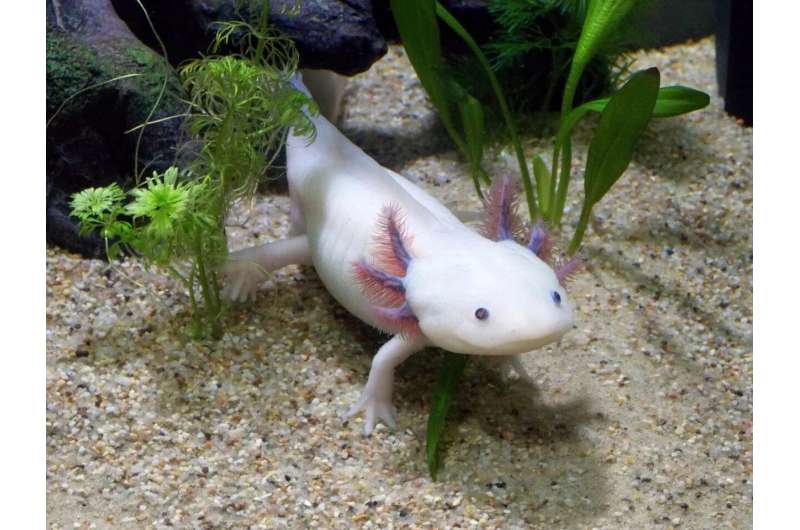The regenerative feats of endangered axolotls
Originally published by Greta Friar, Whitehead Institute for Biomedical Research, on April 8, 2024
Credit: Pixabay, CC-0
Axolotls (Ambystoma mexicanum) are a critically endangered species of salamander. The species has only one natural habitat remaining, a series of canals in Mexico City, and only 50 to 1,000 axolotls are estimated to be left living there.
However, axolotls have become popular both as pets and as model organisms in research, so descendants of axolotls collected from Mexico City many years ago can now be found around the world. Axolotls are highly regenerative, able to regrow entire limbs, and this aspect of their biology is of interest to many researchers—including some at Whitehead Institute.
A strange salamander
Axolotls are known for their unusual looks: They appear to be part lizard and part fish, with a long, finned tail good for propelling them through the water, tiny limbs, and a crown of feathery gills like stout ferns wriggling on the sides of their heads. This odd combination of features, plus the wide curved mouth that makes axolotls look like they are always smiling, has charmed people the world over. Axolotls are popular as pets, toys, Halloween costumes, and more.
The axolotls' unique look is based on some unusual biology. Axolotls are salamanders, a type of amphibian. Amphibians are known for spending part of their lives in the water and part on land, metamorphosing as they grow to switch between traits that favor each ecosystem, like a tadpole turning into a frog. However, unlike most salamanders, axolotls remain in their aquatic juvenile form for their entire lives: permanent tadpoles or nature's Peter Pans.



Comments
Post a Comment